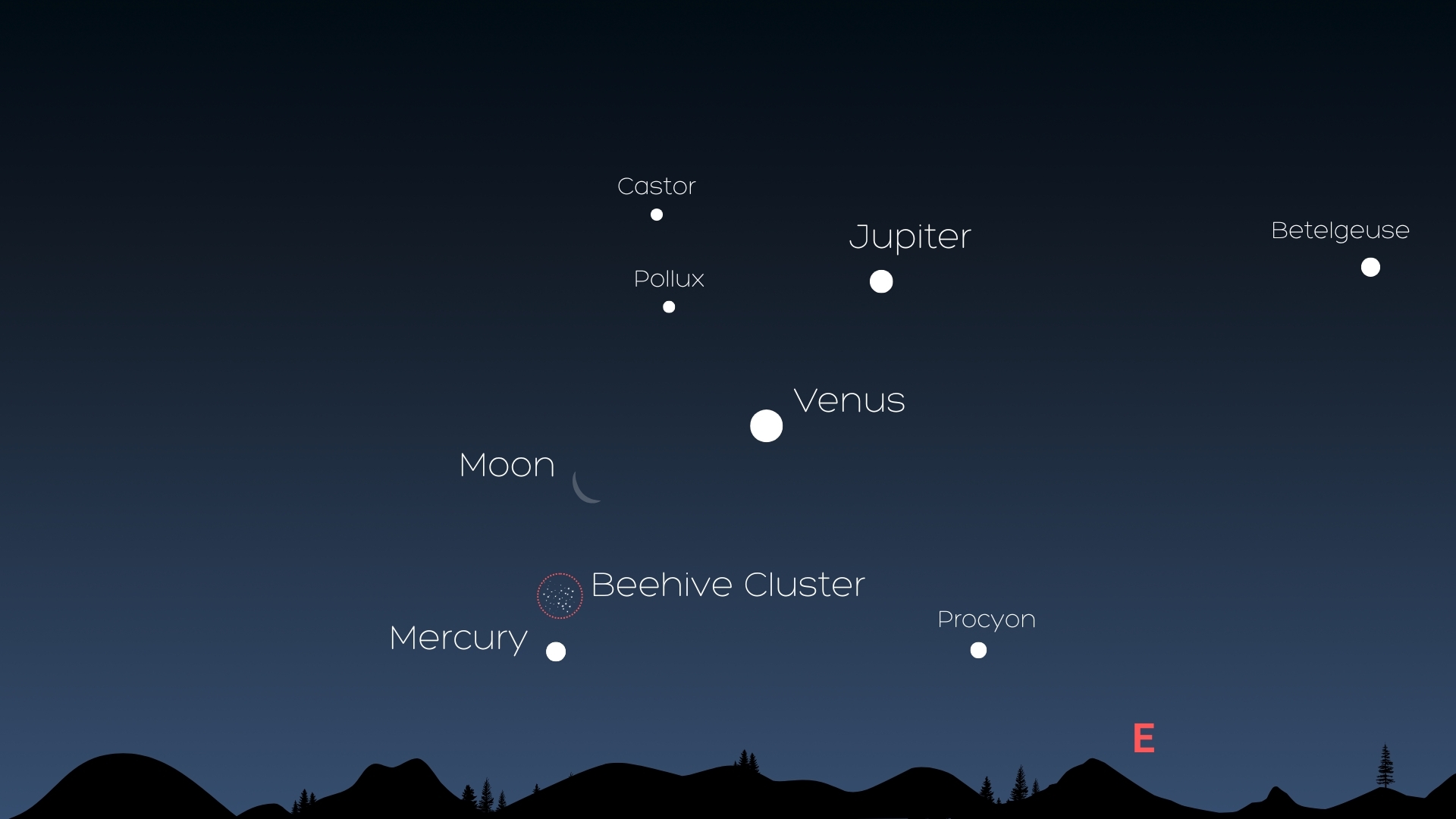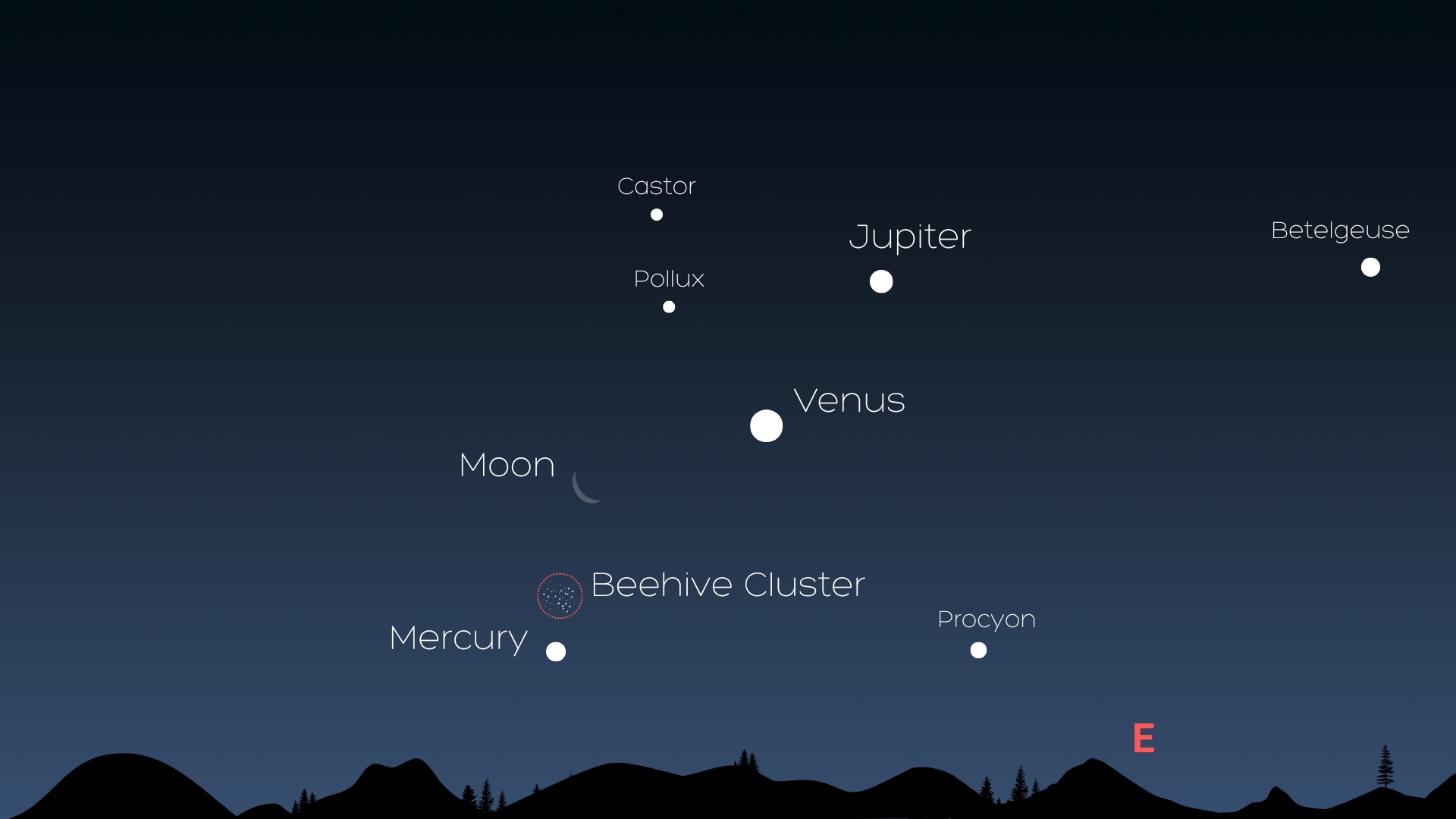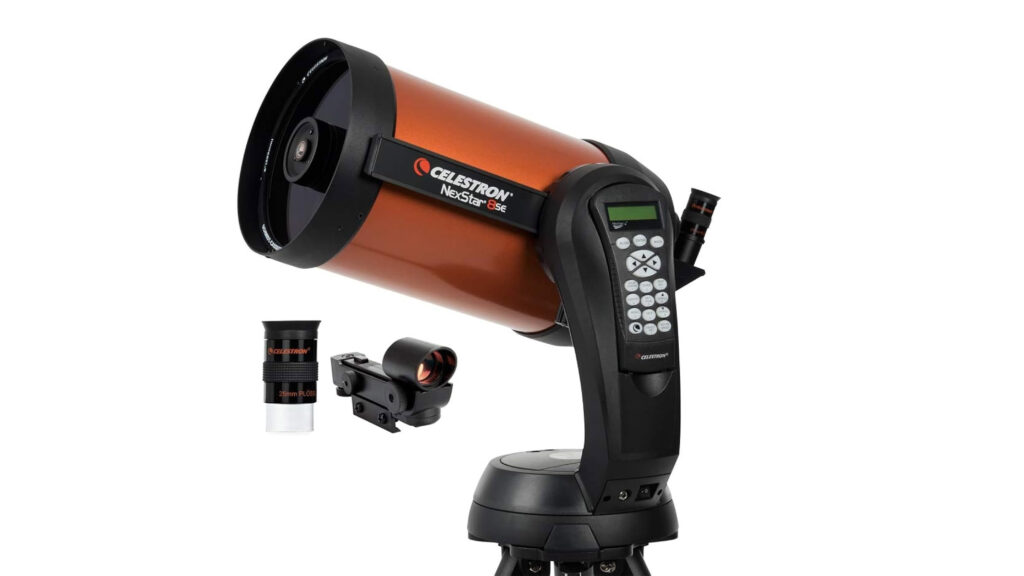Now Reading: Don’t miss Mercury, the moon and the Beehive Cluster align in a special August morning sky show
-
01
Don’t miss Mercury, the moon and the Beehive Cluster align in a special August morning sky show
Don’t miss Mercury, the moon and the Beehive Cluster align in a special August morning sky show

Isaac Asimov (1920-1992), a legendary writer of science and science fiction, once noted in “The Solar System and Back,” that the planet Mercury is rarely visible when it is truly dark.
“I suspect, in fact,” he observed, “that many people today (when the horizon is generally much dirtier and the sky much hazier with the glare of artificial light than it was in centuries past) have never seen Mercury.”
In pre-Christian times, Mercury had two names, as it was not realized that it could alternately appear on one side of the sun and then the other. When visible in the evening sky, it was called Mercury and when appearing as a morning star, it was known as Apollo. It was Pythagoras, around the 5th century B.C., who first recognized that Mercury and Apollo were the same celestial body.
A fine viewing window is now open
Mercury is indeed clever at escaping detection. It is said that the astronomer Copernicus never saw the planet. Yet you can find it, if you know where to look. As the innermost planet, Mercury is usually masked by the sun‘s glare, so we must look for Mercury either soon after sunset, or in the case we are discussing here, just before sunrise.
On the morning of Tuesday morning (Aug. 19), Mercury reaches its greatest western elongation, meaning it’s at its maximum apparent distance from the sun. To catch a glimpse, set your alarm for 45 minutes before sunrise and look low toward the east-northeast horizon. First, you’ll spot brilliant Venus. About one and a half fist‑widths (approximately 15°) lower left of Venus, look for a bright, yellowish point of light, Mercury.

Skinny moon points the way on Thursday
On Thursday morning (Aug. 21), besides Venus, there will be another celestial object to guide you to Mercury.
That will be our moon.
The moon will appear as a very slender sliver of light, only 4% illuminated and less than two days before the new phase. It will be positioned 5 degrees (half a fist) above Mercury. Binoculars will make things a bit easier to make a sighting, though sighting this very thin waning lunar crescent should be evident with the unaided eye. This morning Mercury will shine at magnitude -0.3. Among the stars, only Sirius and Canopus shine brighter, so once you locate the moon, sighting Mercury should be a relatively easy task. And although it swings back toward the sun after Aug. 18, it will continue to be visible until virtually the end of the month as it continues to brighten. By Aug. 28, it will have more than doubled in brightness, reaching a brilliant magnitude of -1.
Beehive buzzes nearby
TOP TELESCOPE PICK

Want to view the night sky up close? The Celestron NexStar 8SE is ideal for beginners wanting quality, reliable and quick views of celestial objects. For a more in-depth look, check out our Celestron NexStar 8SE review.
Besides viewing the moon and Mercury with binoculars on Aug. 21, there will be another celestial sight to look for that morning. Try looking for it when the twilight sky is not so bright, roughly an hour or more before sunrise. Located about 2 degrees below the hairline-thin moon will be M44, one of the sky’s finest open clusters. Popularly known as the Beehive, it’s also one of the nearest open clusters at a distance of 500 light-years. Binoculars are ideal for examining this wide, interesting star field. Its central group of stars is arranged into rough rows that form a generally triangular shape, suggesting an old-fashioned beehive. For centuries, M44 has also been known as Praesepe, Latin for “Manger.” Pressing close to it are the two stars that supposedly represented the Northern and Southern Donkeys: Asellus Borealis and Australis.
Joe Rao serves as an instructor and guest lecturer at New York’s Hayden Planetarium. He writes about astronomy for Natural History magazine, Sky and Telescope and other publications.
Stay Informed With the Latest & Most Important News
Previous Post
Next Post
-
 012024 in Review: Highlights from NASA in Silicon Valley
012024 in Review: Highlights from NASA in Silicon Valley -
 02Panasonic Leica Summilux DG 15mm f/1.7 ASPH review
02Panasonic Leica Summilux DG 15mm f/1.7 ASPH review -
 03How New NASA, India Earth Satellite NISAR Will See Earth
03How New NASA, India Earth Satellite NISAR Will See Earth -
 04And Thus Begins A New Year For Life On Earth
04And Thus Begins A New Year For Life On Earth -
 05Astronomy Activation Ambassadors: A New Era
05Astronomy Activation Ambassadors: A New Era -
06SpaceX launch surge helps set new global launch record in 2024
-
 07From Polymerization-Enabled Folding and Assembly to Chemical Evolution: Key Processes for Emergence of Functional Polymers in the Origin of Life
07From Polymerization-Enabled Folding and Assembly to Chemical Evolution: Key Processes for Emergence of Functional Polymers in the Origin of Life




















